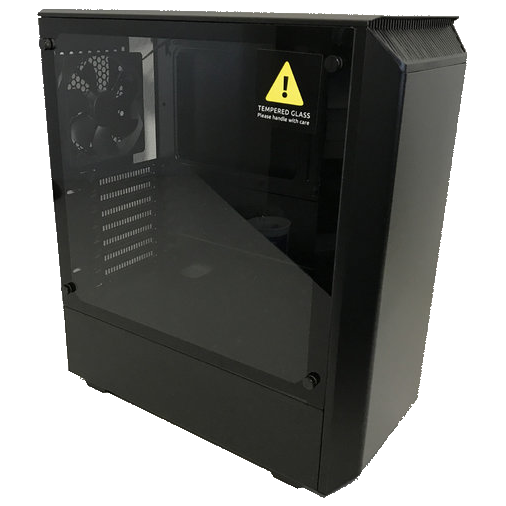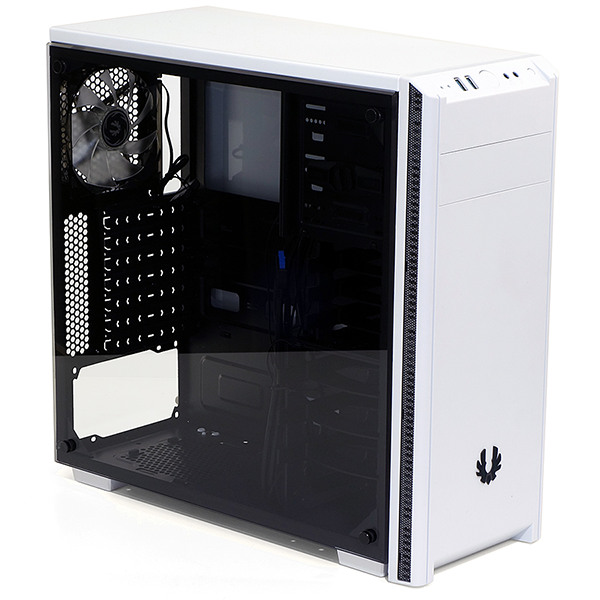Antec P110 Luce Case Review
Why you can trust Tom's Hardware
Hardware Installation & Test Configuration
In lieu of traditional cable pass-through holes, the P110 Luce features a large rectangular cut-out on the right-hand side of the motherboard tray measuring 291 x 70mm (H x W) for cable management. A large silver "cable management bar" covers most of the wires that pass through the motherboard tray.


Additionally, there are two smaller holes in the PSU cover that allow power cable routing. The cable pass-through hole at the upper left hand edge of the motherboard tray is specifically designed for routing fan cables and the ATX12V/EPS12V power cable.

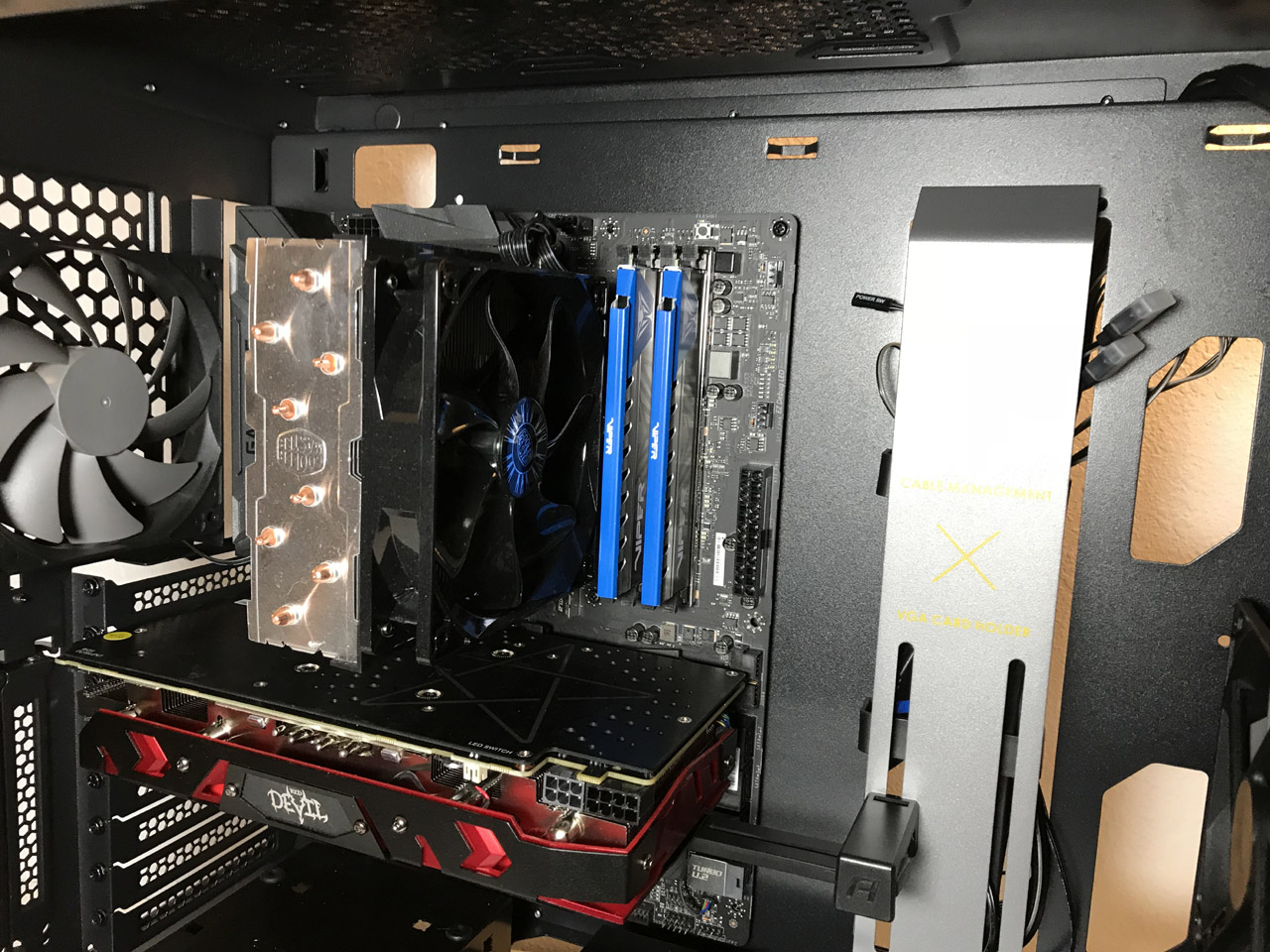

There is also a large hole in the motherboard tray behind the CPU socket area to facilitate heatsink changes without removing the motherboard. Behind the motherboard tray there are plenty of tie down points and close to 20mm of space for cable management.


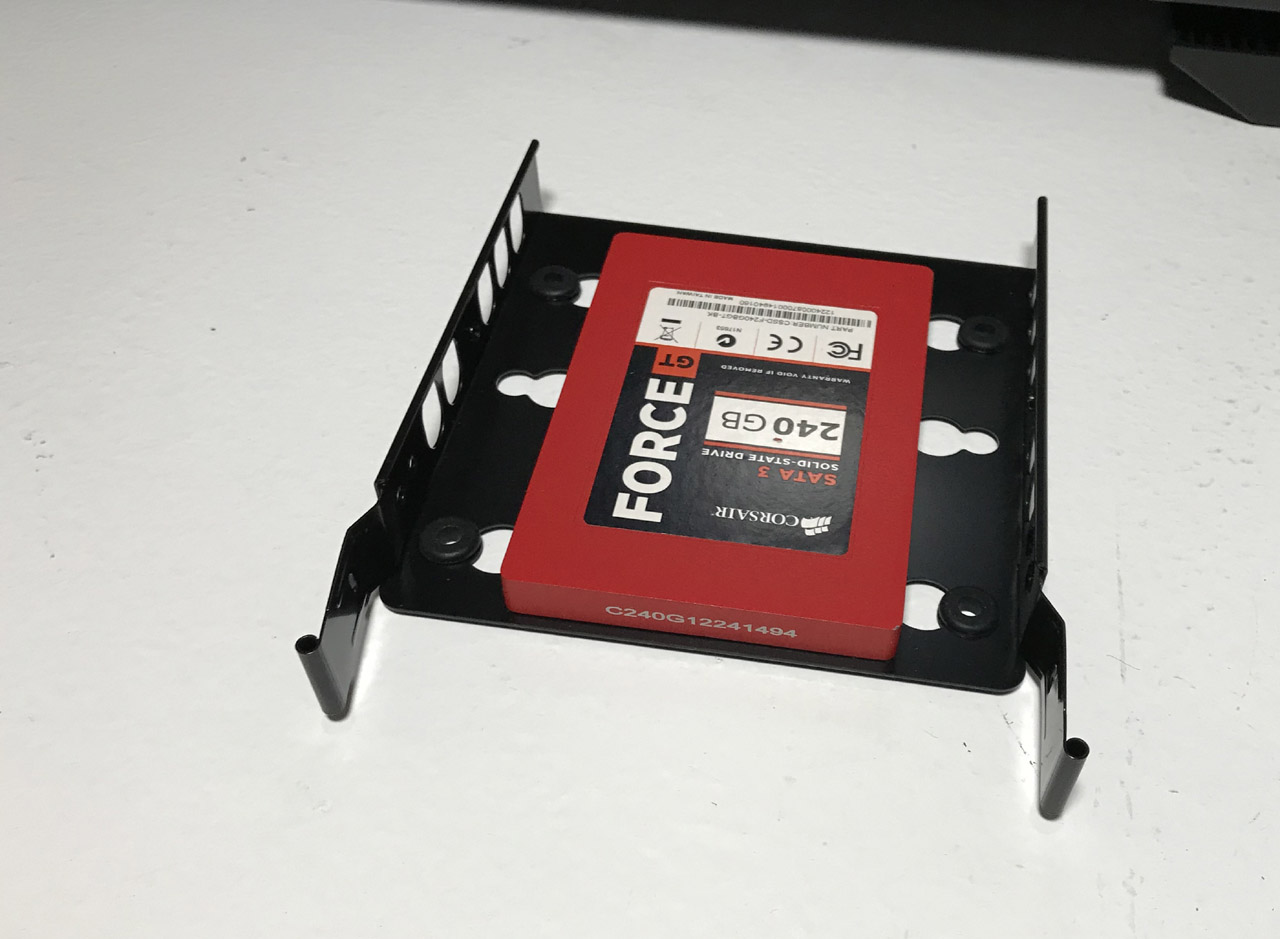



The P110 Luce has mounting locations for up to eight internal hard drives. There are two mounting locations under the PSU tunnel that can accommodate both 2.5" and 3.5" drives. Behind the motherboard tray you will find two dedicated mounting locations for a 2.5” SSD. On the top of the PSU tunnel in the main compartment there are two removable drive trays that can be outfitted with up to four 3.5" hard drives or two 3.5" hard drives and two SSDs. All drive caddies are made of metal and come with rubber grommets for vibration dampening. Depending on the size of the motherboard, graphics card size and configuration, it might not be possible to use the drive caddies that mount to the top of the PSU tunnel.
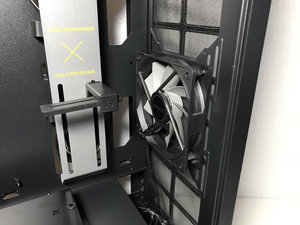
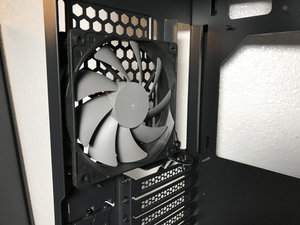
The 120mm exhaust fan coupled with a single 120mm intake fan provides adequate airflow, but just barely. Ideally we would have liked to have seen a larger 140mm intake fan (or an additional 120mm) to improve airflow, but this is something that enterprising enthusiasts can easily accomplish on their own.
This chassis can be equipped with power supplies up to 200mm with the removable hard drive rack in place. Removing the hard drive racks allowed us to easily install power supplies up 225mm in length.
Cooling
The P110 Luce can be equipped with coolers up to 165mm tall and can accommodate graphics cards up to 390mm in length. For longer, heavier graphics cards, there is an adjustable VGA holder built into the cable management bar.
Get Tom's Hardware's best news and in-depth reviews, straight to your inbox.
Radiators and all-in-one coolers can be mounted in the top, front, and rear of this chassis. The mounting locations in the front of the chassis supports 120, 140, 240, 280, and 360mm radiators. It should be taken into account that even though most all-in-one coolers can be physically mounted in the front of this chassis, due to the fixed length of the tubing, some coolers might not be able to reach the CPU socket. But these locations are ideal for mounting radiators for water-cooled graphics cards.

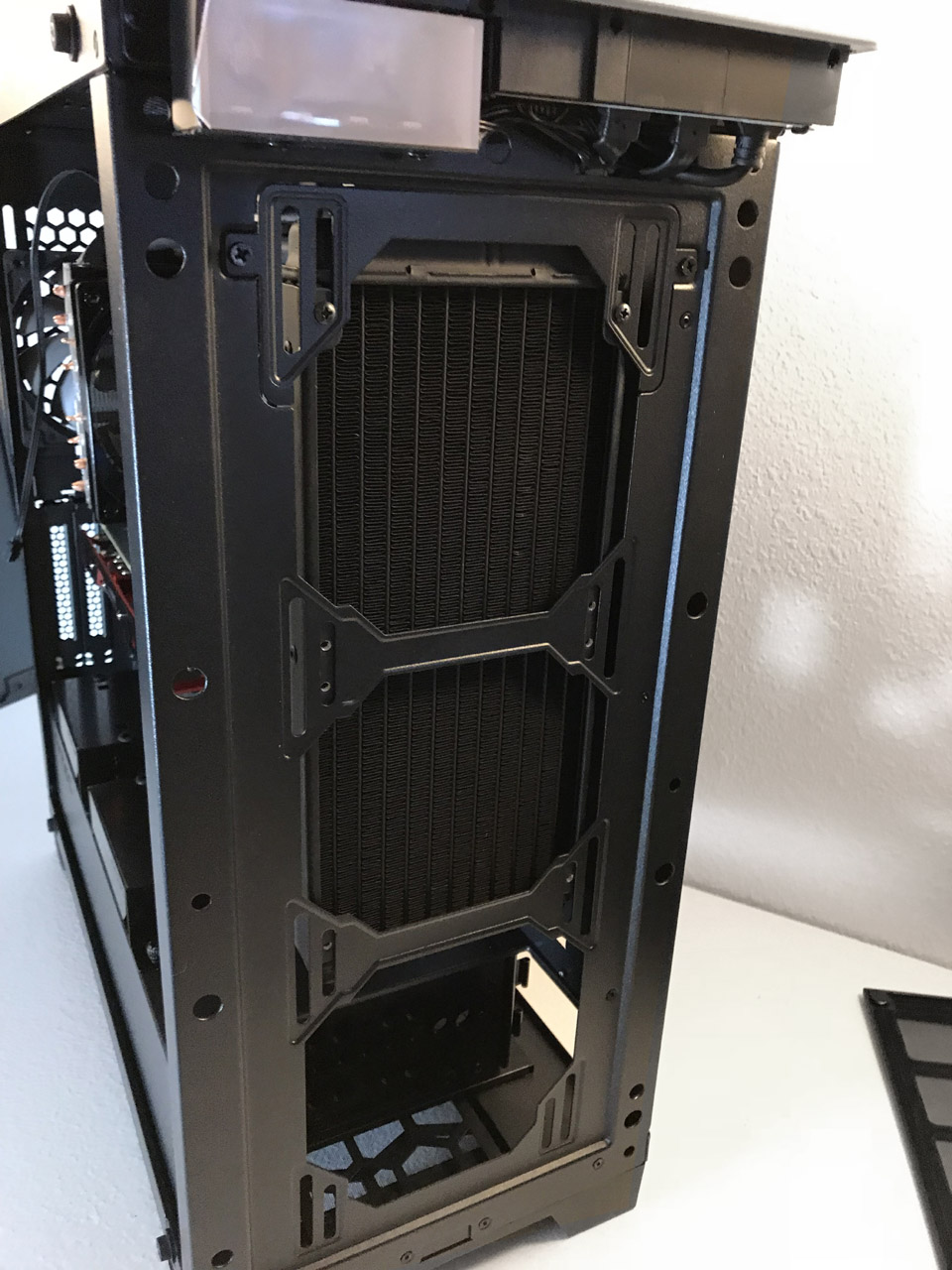

Radiators can be mounted inside the main compartment of the chassis or outside the frame, behind the front fascia. Radiator and all-in-one cooler fans can be mounted in a push-pull configuration by mounting the radiator inside the chassis with the push fans mounted in the area behind the front panel. The mounting locations in the top of the chassis support 120mm and 240mm radiators. As is the case with most chassis that have mounting locations in the top panel, some coolers may be limited to a single fan configuration, depending on the size of your motherboard. Finally, a 120mm all-in-one cooler or radiator can be mounted in the exhaust fan location in single and dual fan configurations.
As previously mentioned, the two 120mm fans included from the factory (one intake, one exhaust) provided barely enough airflow to keep the components in our test system cool. We found that even small changes, such as installing a video card with a blower style cooler, drastically impacted the the airflow profile of this chassis. The reason for this was a simple matter of the cool outside air provided by the single 120mm intake fan being immediately sucked into the blower style GPU cooler and forced out the rear of the chassis. While this benefited graphics card temperatures, the rest of the system suffered as a result. Again, we highly recommend installing a second intake fan or, at the very least, a higher volume 140mm fan.
Comparison Products
Test Configuration
| Cooling | Cooler Master Hyper T4 |
| CPU | Core i5-7500 @ 3.8GHz (38x 100MHz w/ 1.2V Core) |
| Graphics | Radeon RX 580 @ Max Fan Speed w/ AMD Radeon Crimson ReLive 17.9.1 |
| Memory | Patriot Viper DDR4 3000MHz (16GB) @ 16-17-17-36 |
| Motherboard | Z270 Gaming M5 w/ Firmware 7A78v17 (07/03/2017) & Intel INF 10.1.1.42 |
| PSU | Sparkle Magna Platinum (650W) |
| Software | Windows 10 Pro |
| Storage | Agility 4 (128GB) |
| Thermal Paste | MX-4 |
MORE: Best Cases
MORE: All Case Content
Current page: Hardware Installation & Test Configuration
Prev Page Features & Specifications Next Page Benchmark Results & ConclusionSteven Lynch is a contributor for Tom’s Hardware, primarily covering case reviews and news.
-
gosubuilder http://www.tomshardware.com/reviews/nzxt-s340-elite-case,4855.htmlReply
The NZXT 340 elite is cheaper, and better looking, better build quality.
Only thing this case does better is the top filter, which nzxt 340 elite does not provide for some dumb reason (you have to purchase from 3rd party supplier separately) -
JoeMomma For some reason the photos are broken for me in Firefox Quantum.Reply
I see a number where the photo should be and arrows on the left and right.
The charts display correctly. -
Lutfij G,Reply
Antec had the P8 but that also suffered from a higher price tag after a couple of reviewers's reviews went live. You've gotta give them props for coming out with a chassis that has it's branding illuminated on the PSU shroud and the front fascia. -
g-unit1111 Reply20456230 said:G,
Antec had the P8 but that also suffered from a higher price tag after a couple of reviewers's reviews went live. You've gotta give them props for coming out with a chassis that has it's branding illuminated on the PSU shroud and the front fascia.
Yeah I like that part of the design, it's a very nice touch to it. It will be a good addition of my usual go to cases - the Fractals, NZXTs, and Phanteks that I typically own and recommend. -
jason.rogers05 The German beauty, Raijintek Asterion Classic Plus is a great aluminium case, tampered glass on both sides and ample case filteration, would be interested how that fares in the benchmark test.Reply
